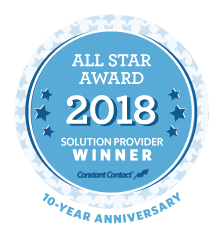This week we are sharing a unique tactic for increasing blog traffic to your website: optimizing the older blog content on your website. The following information is excerpted from a recent article by Pamela Vaughan, published on HubSpot Blogs. Click here to read the full article.
* * *

As more and more businesses have started buying into the importance of content marketing, more and more businesses are creating content. And as the supply increases, so does the competition for getting that content found online.
According to Paul Hewerdine of B2B marketing agency Earnest (via Forrester’s 2014 report on building the case for content marketing), the problem is that “the supply of content is growing, but demand is static.” In other words, the people on the receiving end of all this content are only going to consume so much. Their demand isn’t growing with the supply.
The result, according to that same Forrester report, is that an estimated 50% of content from enterprises is going completely unused. So for marketers who have been blogging consistently for a while and are being tasked with growing and scaling their blogs, the answer can’t just be to increase content production proportionally to the growth goals they need to achieve.
This is why historical optimization becomes so important. Not only is it a way to get more out of the content you already have; but it’s also a way to get a leg up on such a competitive content landscape. And last, but certainly not least, it’s a way to deliver even more value to the people reading your content. After all, if people are going to continue finding your older content through search engines, don’t you want it to be fresh and up-to-date?
What Is Historical Optimization?
Simply put, historical optimization means optimizing your “old” blog content so it’s fresh, up-to-date, and has the ability to generate even more traffic and conversions than it already does. By “old,” I just mean posts that already exist on your blog — whether you wrote them last month or three years ago.
How to Conversion Optimize Old Blog Posts Based on Keywords
- Step 1: Export your blog analytics to identify your top-viewed “old” blog posts.
- Step 2: Identify which keywords each post is getting found for using a combination of keyword research and a keyword tracking tool like HubSpot’s. Then prioritize your keyword list based on the one or two keywords the majority of each post’s traffic seems to be coming from.
- Step 3: Conversion optimize your posts using the target keywords identified in Step 2, incorporating those exact keyword phrase(s) into your posts’ calls-to-action (CTAs).
Why Updating and Republishing Old Blog Content Leads to Better Search Rankings
If you’re curious why this approach works so well, here are a few reasons:
- Google rewards freshness. So do searchers. As I mentioned earlier, in 2011 Google introduced a freshness factor into its ranking algorithm. It makes perfect sense — high-quality, valuable content that’s fresh and up-to-date is exactly what Google wants to surface to searchers.
- You’re building off the existing search authority the post has already accumulated. In other words, you’re starting with a post that already has some degree of page authority, rather than starting completely from scratch.
- New visits naturally lead to new social shares and inbound links. By re-promoting your updated blog posts to your blog subscribers, social media followers, etc., you’re generating a new surge of traffic from additional sources. This naturally leads to an increase in social shares and inbound links — both important search ranking factors. This is also what makes it so important for you to have a substantial number of social media followers and blog subscribers — the greater your reach, the more impactful your results will be.
Want to take advantage of this approach for yourself? Here’s how to do it.
How to Update and Republish Old Blog Posts
- Step 1: Identify blog posts worth updating. Ideally, posts worth updating are outdated or can be improved in some way, and have the potential to rank higher for keywords whose search volume offers a promising opportunity.
- Step 2: Update the content of the post with the aim of achieving three goals — accuracy, freshness, and comprehensiveness. In general, you should strive to make enough noticeable improvements to a post that warrant republishing it as new.
- Step 3: Conversion optimize and search engine optimize the post. Put all the keyword research you’ve done to work by conversion-optimizing the post using the keyword-based method mentioned earlier in this post as well as on-page search engine optimizing it using the keywords you identified in Step 1 above.
- Step 4: Publish your updated post as new by changing the publish date so it’s featured as a brand new post on your blog. Then promote your updated content just like you would any brand new post. Email it to your blog subscribers, promote it in social media, and leverage any other promotional channels that work for promoting your content.
One final word of caution ….
Historical optimization should be a piece of your overall blogging strategy — not the whole strategy.
You can’t completely give up on creating new blog posts in an attempt to optimize the past. Remember, the old content you’re optimizing now was once brand new, and not every new post will turn into an SEO success story. So if you completely forgo new content marketing, you could be shooting your future self in the foot by giving yourself fewer chances to rank for new keywords. You could also miss out on capitalizing on new topics/trends emerging in your industry, as well as opportunities for thought leadership, among other benefits of new content.
* * *
Need help writing optimized blog content for your website? Interested in taking your online marketing activities to the next level? BizzyWeb can help! Check out our Buzz Builders online marketing programs, or contact us today for a free Buzz Report! BizzyWeb can help you create a plan to get REAL results!
 Get Started
Get Started Support
Support Call us
Call us Email Us
Email Us



